What DOT Tire Codes Tell You About Safety and Performance
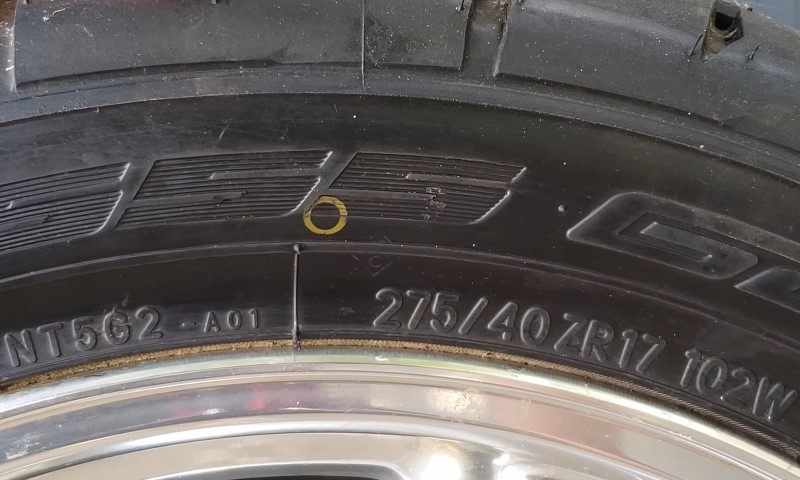
If you’ve ever crouched next to your car and squinted at the jumble of letters and numbers stamped into a tire’s sidewall, you might have thought it was meaningless alphabet soup. It’s not.
Those codes are the tire’s passport: a compact identity card that holds details about where it was made, when it rolled out of the factory, how it was tested, and what kind of performance you can expect on the road.
For drivers, they aren’t trivia. NHTSA reports that 646 people died in tire-related crashes in 2023. Knowing how to read DOT tire codes and related sidewall markings is one of the simplest ways to protect yourself and your passengers.
This guide breaks down DOT codes and the neighboring numbers, translating the regulatory jargon into plain English. By the end, you’ll know how to check a tire’s age, load rating, traction grade, and more. Let’s begin.
The DOT Mark
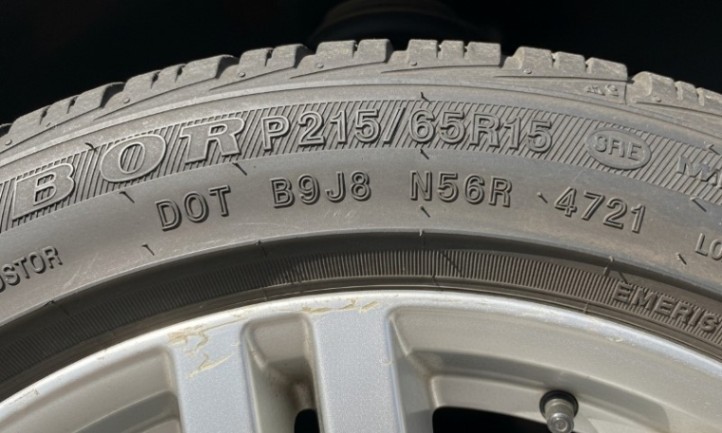
Source: YouTube/Screenshot, DOT mark is basically a promise that the tire is safe for use
It’s easy to gloss over the tiny DOT stamp on your tire, but it carries weight. That mark is a legal promise that the tire meets federal safety standards.
What DOT Really Means
Every tire sold for road use in the United States has a “DOT” stamp. DOT means the manufacturer is certifying the tire meets Federal Motor Vehicle Safety Standards (FMVSS). In short, it’s not an optional label – it’s a legal declaration that the tire is safe to sell.
DOT does not mean the government tested the tire. Instead, manufacturers are responsible for ensuring their tires comply, and regulators spot-check with audits. Think of it as a signed promise backed by accountability.
The Tire Identification Number (TIN)
Right after “DOT,” you’ll see a longer code called the Tire Identification Number (TIN). This string of letters and numbers is like a VIN for your tire.
Anatomy of the TIN
Since April 2025, new tires use a 13-character TIN , broken into three parts:
- Plant code (3 characters): Identifies the factory where the tire was made. NHTSA’s vPIC MID database can match codes to manufacturers and locations.
- Manufacturer’s code (6 characters): Internal designation for tire size or construction.
- Date code (4 digits): The week and year of manufacture.
Full vs. Partial TIN
Here’s a common point of confusion: one sidewall might only show part of the TIN.
Regulations require the full TIN on one sidewall , but allow a shortened version without the date code on the other. If you think your tire looks incomplete, check the opposite side.
Decoding the Date Code
View this post on Instagram
The last four digits of the TIN are the date code. For example:
- 1523 = Week 15 of 2023.
This matters because tires age, even if the tread looks fine. Rubber hardens, cracks, and loses elasticity over time.
Most manufacturers recommend replacement around 6 to 10 years from the build date, regardless of mileage.
Quick Rules
- At 6 years: Inspect annually for cracking or stiffness.
- At 10 years: Replace, including spares.
Tire Rack and other industry leaders remind drivers that pre-2000 tires used a three-digit date code. While rare today, it’s something to watch for if you’re buying an old spare or used tire.
Plant Code and Origin
The plant code at the start of the TIN links back to the manufacturing facility. Why should you care? Because recalls and defect investigations often point to specific plants.
Being able to identify where a tire came from can help you confirm if yours is affected.
Brands like Hubtrac tires from Austria even showcase their production origins in detail, from mixing compounds to final testing.
NHTSA makes plant code lookups available online: vPIC Equipment Plant Codes .
UTQG – The Government’s Tire Grades
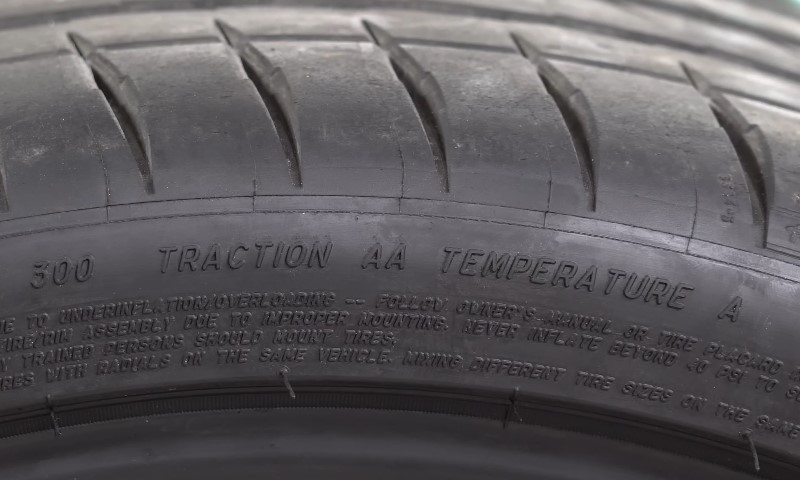
Source: YouTube/Screenshot, The UTQG marks are showing tire’s traction ability and temperature resistance
Beyond DOT certification, U.S. passenger tires also carry Uniform Tire Quality Grading (UTQG) marks. These are quick-look ratings for treadwear, traction, and temperature resistance.
What Each Grade Means
- Treadwear: A comparative index. A 300 rating lasts three times as long as the government’s test tire. Not a mileage guarantee, just a relative measure.
- Traction: Graded AA, A, B, or C. Measures wet braking performance on test surfaces. It doesn’t tell you about cornering or snow grip.
- Temperature: Grades A, B, or C. Higher grades resist heat better at speed.
| UTQG Label | What It Tells You |
| Treadwear 500 | Expect long life, but not necessarily great winter grip |
| Traction A | Solid wet braking ability |
| Temperature A | Safe for high-speed highway driving in hot climates |
Using UTQG in Real Life
- Wet weather driver? Look for Traction A or AA .
- Hot climate or lots of interstate miles? Prioritize Temperature A .
- Don’t just chase high Treadwear numbers – harder compounds that last longer may sacrifice cold or wet grip.
Load Index and Speed Rating
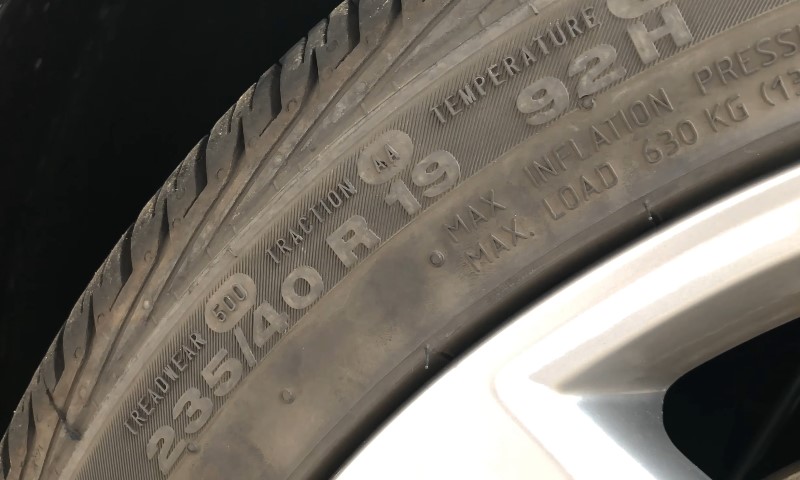
Source: YouTube/Screenshot, Load index shows speed and load ratings
Next to the tire size, you’ll find a load index (number) and speed rating (letter).
- Load index: Maximum weight the tire can safely carry at the right inflation.
- Speed rating: Maximum speed capability under controlled conditions.
Example: 97V
- 97 = can carry 1,609 pounds at specified pressure.
- V = rated for sustained speeds up to 149 mph.
Why It Matters
Using a tire with too low a load index or speed rating can cause overheating, belt separation, or blowouts. Always match or exceed your vehicle’s placard values (the sticker in your driver’s door jamb). You can also check those numbers when buying or even renting a car.
Winter Performance Symbols (M+S vs. 3PMSF)
Not all “all-season” markings are created equal.
- M+S (Mud and Snow): A design-based marking, not a performance certification. Almost every all-season tire has it.
- Three-Peak Mountain Snowflake (3PMSF): A true performance mark. It means the tire passed a snow traction test defined in UN ECE Regulation 117 , recognized internationally.
Some newer tires also carry an Ice Grip symbol for extra validation in icy conditions. If you live where winters are harsh, always look for 3PMSF, not just M+S.
FMVSS 139 – The Standard Behind DOT
For light vehicles, FMVSS 139 is the backbone regulation. It covers endurance, high-speed performance, bead unseating, plunger energy, and labeling.
It’s the reason DOT and TIN codes exist, and why tires sold in the U.S. are traceable and test-proven.
Sidewall Walk-Through: A Real Example
@humblemechanic Easy to lose sight of how important tires are! Here is how to read the data in the sidewall @kumhotireusa kumhotire tire tires humblemechanic
Imagine your tire reads:
DOT T7D3 1BH 1523 • P225/55R17 97V • TREADWEAR 500 TRACTION A TEMPERATURE A • 3PMSF
Here’s what you learn:
- DOT T7D3 1BH 1523: Built in week 15 of 2023 at plant T7D3, size code 1BH.
- P225/55R17 97V: Fits a passenger vehicle, 225 mm wide, 17-inch rim, load index 97, V-speed rated.
- UTQG 500 A A: Long tread life, strong wet braking, high heat resistance.
- 3PMSF: Certified for severe snow.
From one glance, you know the tire’s age, origin, performance certifications, and whether it suits your climate.
Don’t Forget to Register Your Tires
Few drivers bother, but registering tires makes DOT codes truly useful.
- You’ll need the DOT TIN and your contact info.
- Registration ensures you get recall notices directly.
The U.S. Tire Manufacturers Association has a tire registration portal. NHTSA also provides a tire recall search tool.
What DOT Codes Don’t Tell You
DOT and UTQG give plenty of safety info, but they don’t cover everything. Other sidewall marks matter too:
- Max load and pressure: Upper limits, not daily targets. Always use your vehicle’s placard pressures.
- Load range (SL, XL, LT): Defines how much weight the tire casing can handle.
- Directional/Asymmetric labels: Arrows or “Inside/Outside” marks dictate how the tire must be mounted.
Tire Age
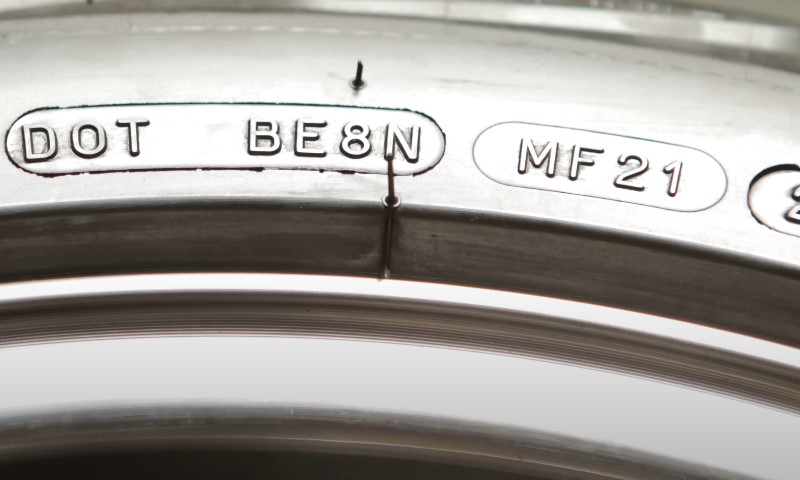
Source: YouTube/Screenshot, Yes, you can even find out how old the tire is
One of the biggest safety takeaways from DOT codes is tire age. Rubber compounds degrade even when the tread looks fine. Cracking, flat-spotting, and sudden failure all become more likely.
That’s why several automakers, Toyota, Mercedes-Benz, and Ford, recommend replacing tires at around 6 years regardless of use. Ten years is the absolute outer limit.
Common Myths About DOT Codes
- Myth: DOT means government-tested.
Reality: It’s manufacturer certification. - Myth: UTQG traction grade covers snow.
Reality: It only covers wet braking. Snow requires 3PMSF. - Myth: Max pressure on sidewall is the setting you should use.
Reality: That’s a limit, not your daily inflation target. - Myth: A partial DOT code means counterfeit.
Reality: It’s allowed on one sidewall. Full code is always on the other.
Quick Checklist for Drivers
- Find and note the DOT TIN .
- Check the date code . Replace if 6–10 years old.
- Match or exceed your vehicle’s load index and speed rating .
- Use UTQG grades to compare tires within a category.
- For snowy climates, insist on the 3PMSF mark.
- Register your tires and keep records for recalls.
FAQs
Final Thoughts
DOT tire codes aren’t just for regulators and inspectors. They are a practical toolkit for everyday drivers. From spotting old stock at a tire shop to checking if your set is recall-ready, the codes help you make safer decisions.
If you do nothing else:
- Check the date before you buy.
- Match your vehicle’s placard for load and speed.
- Look for 3PMSF if winters are severe.
- Register your tires.
That small effort pays off in real safety. Your tires are the only thing connecting your car to the road – and the DOT codes stamped into their sidewalls are your easiest window into how reliable they really are.
Leave a Reply